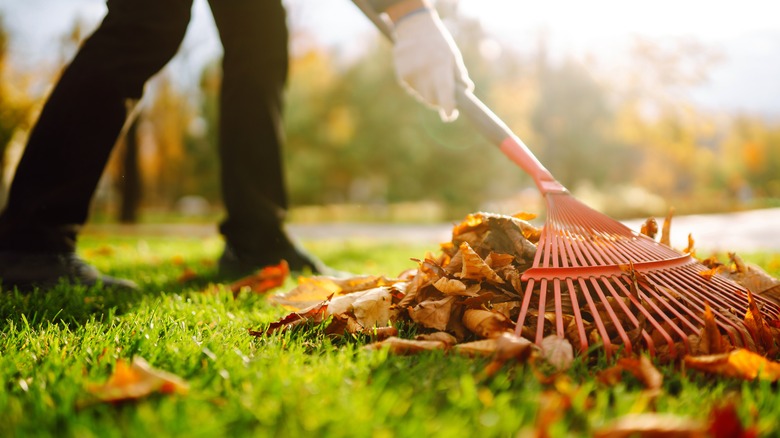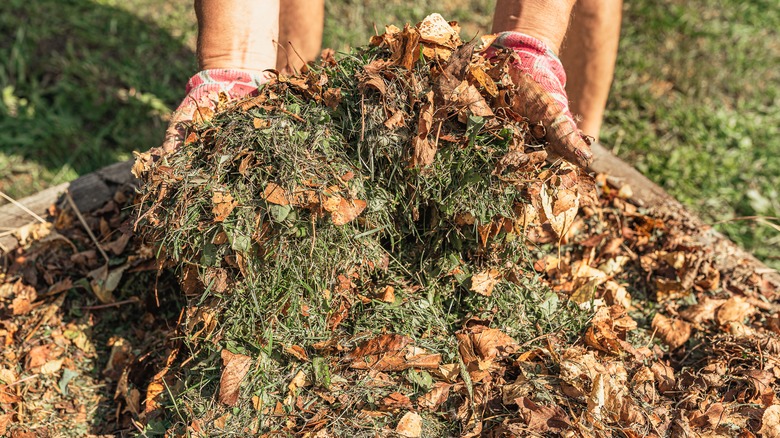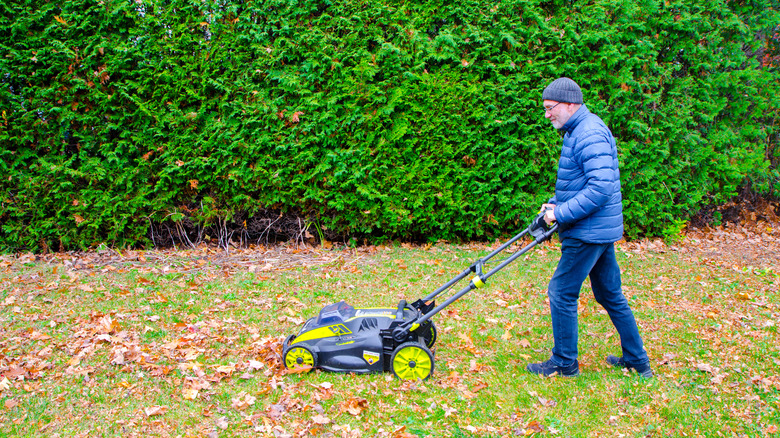Transforming Fall Leaves Into Fuel For Your Garden Is Easier Than You Think
When the trees turn yellow and leaves start to hit the ground in autumn, many of us reach for our rakes and collect all the leaves in brown paper bags to be removed from the yard and carted off to a landfill. While this process will keep a lawn looking spick and span, it will also remove all of the beneficial nutrients that decaying leaves add back into the soil. So, this year, instead of wasting all those lovely leaves, try keeping them to use like a fertilizer in your garden that will replenish the soil's carbon and help your plants grow healthy and strong.
Plus, the best thing about reusing your leaves as garden fuel is that it is a super easy process — all you need to do is shred up your leaves and then add them to the area you want to fuel up with carbon for the spring growing season. With this method, you can get all the added benefits of the decaying leaves without spending time, energy, and yard space composting them. So, how do you do it?
How to turn leaves into garden fuel
The first step in turning your leaves into garden fertilizer is to shred them up. This is an essential part of the process because shredded leaves are less likely to stick together and form clumps that block water drainage. Furthermore, cut leaves have more open edges which then allow more microbes to enter and break down the leaf faster than they would be able to with whole leaves.
To shred your leaves, you can use a special leaf shredding tool –- or you can simply do it with your lawn mower. Then, once you've mowed over all the leaves and chopped them up, rake them into a pile and add them to your garden. If you want to use the leaves as insulation to protect your plants from frost, you can spread the shredded leaves over the soil in a six-inch-thick layer. If your garden is already done for the year and you want to simply use the leaves as fertilizer for the following year, you can till the shredded leaves directly into the soil. Either way, the leaves will break down during winter and your carbon-rich soil will be ready for planting in the spring.
A few things to consider before adding leaves to your garden
Before shredding your leaves and adding them to the soil of your garden, it's important to know that the leaves of certain trees can actually prevent plant growth instead of helping it. If you have walnut, eucalyptus, or camphor laurel trees in your yard, you will need to avoid using their leaves as garden fuel because they may end up hurting your plants.
If you plan to use your shredded leaves as a mulch, it is also important to know that some common garden plants prefer to not be covered in a moisture-holding layer of leaf insulation and grow better uncovered and in dry soil. Some plants like this include classic kitchen herbs like sage, thyme, and oregano as well as others like lavender, succulents, and any plant that typically enjoys a dry climate.
If for some reason, you don't want to use shredded leaves in your garden, you can always spread them evenly over your lawn to help add nutrients back into your yard. This method works best when you have a light layer of leaves on the ground because a layer that is too thick may smother the grass and prevent growth. You should always make sure that you can still see grass through the shredded leaves in your yard.


